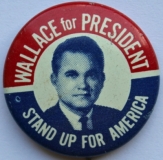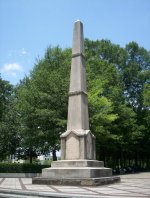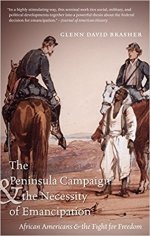
Dear Governor Ivey,
You recently declared that you have no interest in what “folks in Washington,” or “out-of-state liberals” have to say about Alabama’s Confederate monuments.
Ok then, how about a white native-born and bred Alabamian that has made a life out of historical research and writing, and who teaches history to college students right here in our mutually beloved state? Would you mind hearing from me?
You claim that “to get where we’re going, means understanding where we’ve been.” Yet I am not so sure you fully understand where we have been.
Stay with me here . . .
I was born in the turbulent year of 1968 on Birmingham’s Southside, at St. Vincent’s hospital.
I’m sure you can remember the year well: the Tet Offensive in Vietnam led to President Johnson’s decision to not seek reelection; Martin Luther King Jr. was killed, sparking racial violence in many of America’s cities; Bobby Kennedy was shot down after winning the California primary; young American war protestors clashed with the police in Chicago during the Democratic National Convention; Richard Nixon won the presidency by blowing the proverbial “dog whistle” about “law and order”; And our very own George Wallace made a strong third party showing in the election, despite (and because of) his recent career of standing firmly against integration.
Oh, that George Wallace. I’m sure you know about how he won the job you now have by proclaiming he would resist “outside agitators” that wanted to integrate our schools. “Segregation today, segregation tomorrow, segregation forever,” he declared, while harkening to the Confederacy and the “heart of the great Anglo-Saxon southland.”
Yet those “outside agitators” were mostly southern born and bred African Americans. MLK? Heck, he was just a young Georgian that got his first job in our state and first gained fame as a resident here.
And then there was that time Wallace stood in the door of Foster Auditorium on the University of Alabama campus, speaking out against the “tyranny” of Washington DC that was forcing the school to integrate.
He lost that battle as Vivian Jones and James Hood, two native born Alabamians, were allowed to register. Damn those outside agitators.

Jones and Hood, getting registered at their own state’s flagship University
In the years afterward, a lot of white Alabamians placed their kids in private academies to avoid integration, but I was part of the first generation of Alabama school children that went to integrated public schools their whole life. From first grade in 1975 until I graduated from Homewood High School in 1987, my world was filled with black faces and friends that I sat next to in class and in the lunchroom, played sports with, hung out with on the weekends, and walked across a stage with to receive our diplomas.
Turns out that integration wasn’t so bad after all, and is likely the main reason why I grew up largely judging people by the content of their character, rather than the color of their skin.
Yes, that was MLK’s dream, that Georgian who lived and spent much of his life in Alabama. Oh, and remember that time he marched across the Pettus Bridge in Selma alongside native born Alabamian John Lewis, the same guy that was a leader in the Freedom Rides? Damn those outside agitators.

King and Lewis, those darn agitators.
Anyway, after finishing up high school, I went to college at the University of Alabama in Birmingham, where I majored in history. Guess what I learned in both those Alabama public schools and at UAB? I learned that the reason the southern states seceded from the Union and tried to establish their own government was so that they could prevent the destruction of slavery.
It seems that they too did not want “outside agitators” like abolitionists and a democratically elected president in Washington DC to tell them what to do with their domestic institutions.
So they seceded, establishing a Confederacy that their vice president unashamedly declared to have been built “upon the great truth, that the negro is not equal to the white man; that slavery — subordination to the superior race — is his natural and normal condition. This, our new government [the Confederate States of America], is the first, in the history of the world, based upon this great physical, philosophical, and moral truth.”
Yes, that Confederacy. The one we have all those monuments to.
While at UAB, I also learned much about the “Lost Cause,” the successful attempt of white Southerners to rewrite the history of the Confederacy after its defeat, stressing that secession had been about “state’s rights,” not slavery. Furthermore, they insisted, slavery had been a benign institution that benefitted both races, and that a strict racial hierarchy had created a much more peaceful and harmonic society than existed elsewhere in the country.
Yet if slavery had to be gone as a result of the efforts of “outside agitators,” white Southerners believed they could at least recreate its racial order through “Jim Crow” segregation laws. At the forefront of those efforts during the late 1800s and early 1900s, was the construction of memorials to the Confederacy and its gallant soldiers. Monument dedications became “teachable moments” in which speakers enthralled crowds with the deeds of the glorious dead that gave their lives in defense of a superior racial order.
Yes, I learned much of that while at UAB, from a professor that was born and raised in Mobile and received her PhD in Georgia. Damn those outside agitators.
Also while I was at UAB, Birmingham opened its beautiful Civil Rights Institute and Museum, and I took enormous pride in the facility’s effective presentation of the role of my hometown in some of the Civil Rights movement’s most dramatic events in fighting to end those Jim Crow laws.
It always struck me that the Children’s March in 1963, (when hundreds of children were jailed and firehosed in the streets of their very own hometown–damn those outside agitators), took place under the shadow of one of those Confederate memorials in Linn Park.

Confederate monument in Linn Park
You know the one. It is the one that Alabama citizens and elected officials in Birmingham now want removed. They stand in defiance of that law you so pridefully signed that prevents local Alabama communities from making their own decisions about what they want to memorialize in their own streets and cities. Damn those outside agitators.
And damn local rights.
After college, I started pursuing a PhD, and that journey temporarily led me out of state. It was then that I learned that many people outside of Alabama believed it was still 1963 down here, with racism and perhaps even Jim Crow still reigning supreme. I tried to tell them about how far our state had come, but it was a tough sell, even in the 1990s.

This had to be written by an “out of state liberal!”
I returned home when the University of Alabama lured me with fellowships and scholarships, and it was there that I earned my PhD by researching and writing a book about the roles that enslaved African Americans played in the fight against the Confederacy. Imagine that! A white Alabamian writing about such a thing! Don’t only “out of state liberals” focus on the Confederacy’s commitment to defending slavery? Damn those outside agitators.
I’m still here in Tuscaloosa, but now I am teaching—about slavery, the Confederacy, the Civil War, the Lost Cause, the Civil Rights movement. And guess what? I can promise you that even if every last Confederate memorial were to come down, those things will still be researched, written about, and taught in schools. History would not be erased.
And it will continue to be taught in ways that corrects the history that those monuments were built to distort.
The irony here is that I am actually not in favor of removal of the monuments (I support contextualization), but I am in favor of local communities deciding for themselves what they want to do with them. They shouldn’t be dictated to by people outside their community.
Even those in Montgomery.
Governor Ivey, I know that your defiant message probably plays well with many of your constituents. But please understand that when you use the language you have about “out-of-state liberals” and “folks in Washington” you’re using the same message as proslavery advocates when they resisted abolition, post-Reconsruction era politicians when they maintained white supremacy by passing Jim Crow laws and building Confederate monuments, and anti-integrationists like your predecessor George Wallace when he led the state against the Civil Rights movement.
And just like Wallace, you’re ignoring the fact that native-born Alabamians, then as well as now, are on the forefront of these efforts at racial reconciliation, Civil Rights, and an honest reckoning of our history.
You only insult and belittle them and demonstrate that you care little about listening when you label their beliefs “politically correct nonsense” coming from outside the state.
Do you really want to sound like you’re on the same side as proslavery advocates, Jim Crow, and George Wallace? If so, perhaps our beloved state actually is still stuck in 1963, and you’re definitely not the one that can lead it forward.
Sincerely,
A proud Alabamian.


